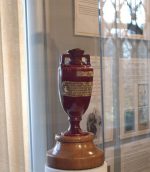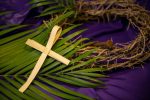Old Goa: The Museum of Christianity is located in the 17th-century Santa Monica Monastery in the heart of Old Goa, a beautiful district of churches, monuments and ancient monastery ruins.
The church is attached to a three-story stone building. The museum is in the strait.
Over the past three years, the museum has been carefully refurbished in a project jointly carried out by MoCA and the Calouste Gulbenkian Foundation, a charitable body based in Portugal, and more than 200 crafts carried out by INTACH (National Trust of India). Is protected. (For arts and cultural heritage), New Delhi.
The refurbished museum now spans the first, mezzanine and reconstructed ground floors, and the original museum collapsed in the 19th century.
“In the new museum layout, the art objects of the collection are displayed in a specially designed display case with proper lighting. The collection is grouped by material, chronologically arranged, with India. We support the interpretation of the evolution of Portuguese art history, “says museum curator Natasha Fernandez.
When the Portuguese arrived in India, they brought European masterpieces and used them as models when requesting new works by India’s own highly skilled artists. As a result, various relics were created in the Portuguese colonies between the 16th and mid-20th centuries, marking both cultures.
Portuguese icons may have features that clearly look Indian. Local embroidery appears in the clothes worn by the expressions of Jesus and Mary. Local flora and fauna appear in the statue. And in a seamless cultural marriage, important symbols for Hindu beliefs, such as lotus and naga, are clearly found in Christian relics.
Intricate metalwork covers the monstrance of the 17th-century Tabernacle. (Image courtesy of MoCA)
At the museum, the most complex example of Indian and Portuguese art is the 18th-century image of Christ Child, the savior of the world, featuring a red velvet gown covered with Naga and Zardoji embroidery. Mary’s 20th century ivory-colored representation as Nirmalamasa, standing up from a lotus and dressed in a sari. A 17th-century painting of the Virgin and Child bordered by paisley and silver filigree. The monstrance of the 17th century silver-on-wood tabernacle.
The tabernacle’s monstrance (the tabernacle is a sacred object used to hold consecrated wafers called hosts) is about 5 feet high. The spherical base is made of silver-covered wood, and the monstrance (used to represent the sacred host for worshiping believers) has the shape of a wonderful pelican. Its chest has an opening surrounded by a golden sunburst designed to show off the consecrated host. Two offspring are clinging to the bird and waiting to be fed. “All these features, and especially the metalworking techniques used by silversmiths on the feathers, make this piece unique,” says Fernandez.
Elsewhere, Jesus’ intricate 17th-century ivory representation as a good shepherd depicts a boy in sheepskin. The pedestal is made to resemble a tiered hillock. Protruding from the upper floors is the face that represents the fountain of life, from which the water of life spouts into the basin, from which the bird’s paradise drinks. Downstairs is the holy regret of penance in the cave. The lush foliage, which symbolizes the tree of life, was part of the original, but is now lost.
A delicate picture of the Virgin and Child shows Mary with her arms crossed on her chest overlooking the sleeping Jesus. This picture is also noteworthy in multiple frames. One is a stylized leaf motif, the other is a floral or animal motif, the other is a scrolling Mughal paisley, and the final outermost frame is made of fine silver filigree. ..
These and other relics of the renovated museum can be found online at museumofchristianart.com.
https://illinoisnewstoday.com/goas-christian-museum-a-mountain-of-relics-from-india-and-portugal/218101/









